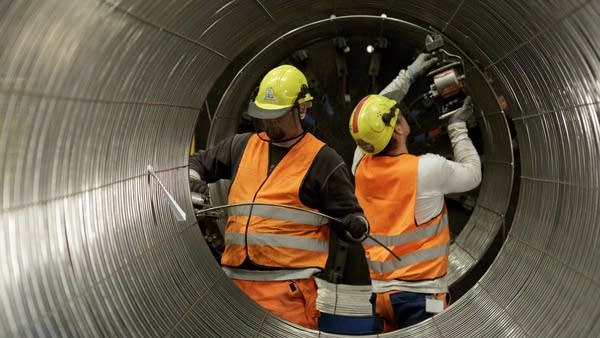What does hitting pause on the Nord Stream 2 pipeline mean for Europe’s energy supply?
Europe is trying to pivot away from coal and crude oil, and has limited capacity for liquified natural gas.

In response to Russia’s actions in Ukraine, Germany is withholding its approval of a major pipeline designed to move natural gas from Russia to Germany. The Nord Stream II pipeline was completed in September, but it needs Germany’s sign-off to start operating. The move could complicate Europe’s longer-term energy plans.
Europe is trying to transition away from coal. And crude oil. It already relies on Russian natural gas to supplement its wind and solar power.
“Russian gas is the cheapest and most available supply,” said Sara Vakhshouri, who runs SVB Energy International.
She said Europe could buy more liquified natural gas from Qatar or even the U.S. But LNG comes with shipping and liquefaction costs.
“The whole process is more costly than just exporting the natural gas from Russia to Europe in [a] pipeline,” she added.
Europe has been importing more LNG anyway, but there’s only so much it can take in, said Matt Smith, at the data and analytics company Kpler.
“Last month, we saw capacity in Europe hitting up against 100% there. So they couldn’t pull in any more LNG than they already are,” he said.
Regardless of what happens with the Nord Stream II pipeline, Smith said natural gas prices in Europe are likely to stay elevated throughout the year.




